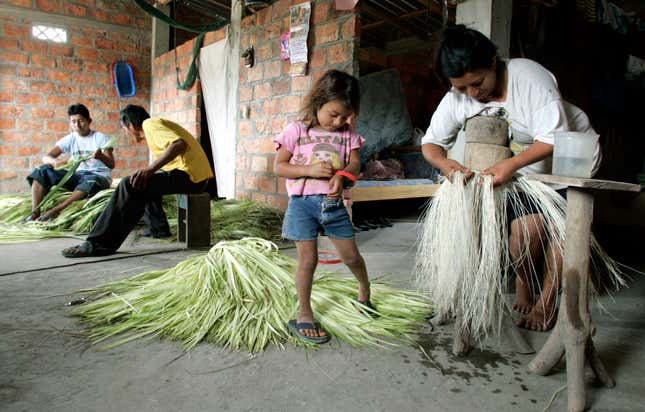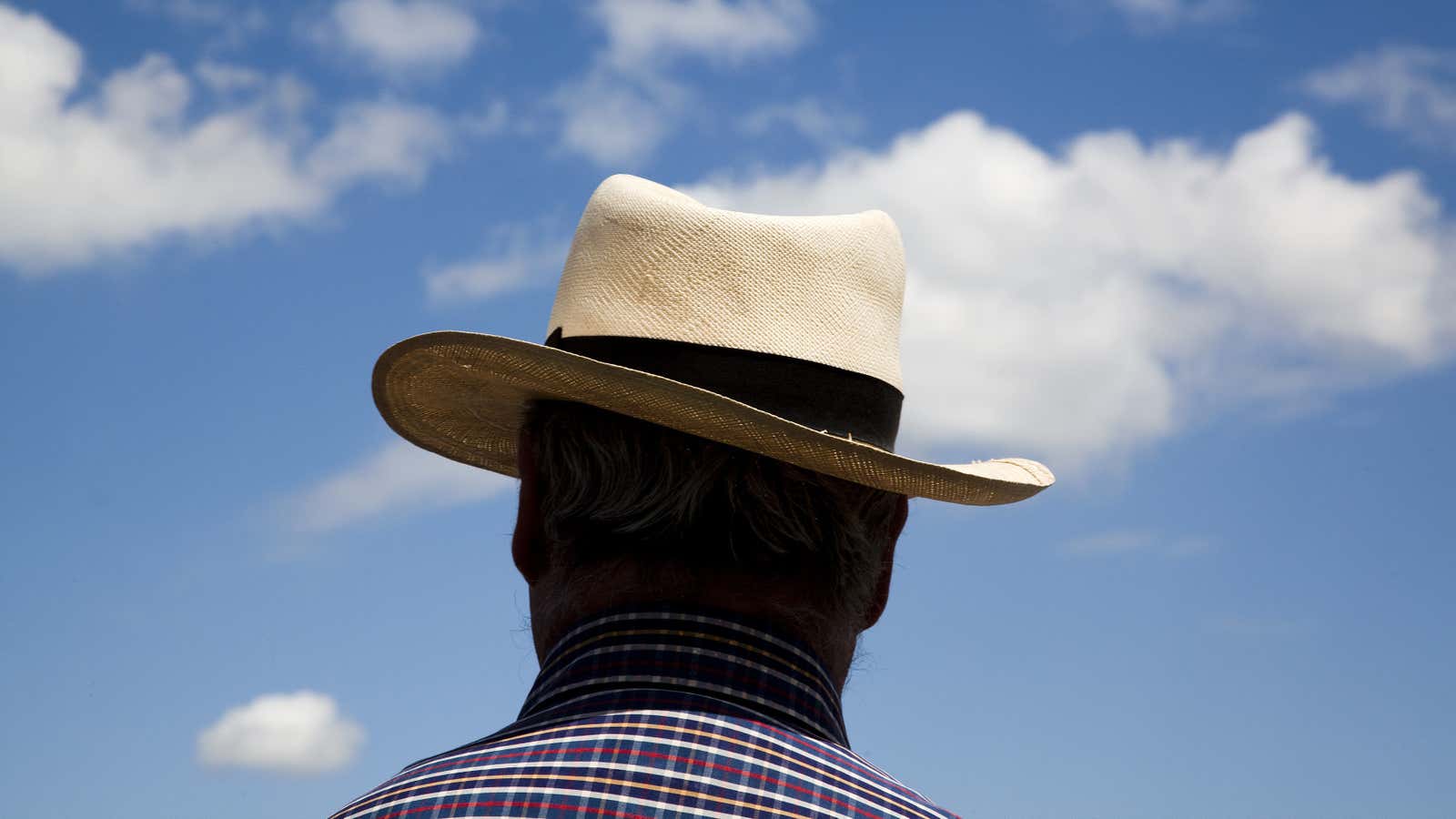There’s a great artisan who resides in the village of Pile, in the hills outside Montecristi, a small town on a wide coastal plain along Ecuador’s western limit. His name is Simon Espinal, and his trade is making Panama hats.
Espinol’s latest creation is a masterwork perhaps unmatched in the history of Panama hat-making, as NPR reports in a piece very much worth reading.
The weaving of a high-quality Panama hat is an intricate, laborious process. The iconic brimmed straw hats are created from fine strips of toquilla straw, harvested from palm trees that grow along the Ecuadorian coast. A single hat can take up to six months (pdf) to complete, and the best ones are formed from around 3,000 weaves per square inch—an impressive figure already.
Espinal painstakingly performed an unheard-of 4,000 weaves per square inch on his recent creation, spending eight months—from June to February—and logging nearly 1,000 hours of work. The strain on his eyes and mind was so great, he says, that he’ll never attempt another such hat again.
The result appears to be the finest Panama hat ever made. ”My hope is that it will go to a museum,” Brent Black, a Panama hat dealer who sells Espinal’s work, told NPR. “This is not a hat that should be on anybody’s head. This is the very pinnacle of an old and very beautiful art.”
It’s difficult to judge what such a hat might fetch at sale. Panama hats are desirable for their light weight, smooth cream color, and beautiful weaving, and knowledgeable buyers pay handsomely for them. A previous hat by Espinal composed of 3,000 weaves per square inch sold for $25,000, and Black sells hats priced even higher. If this hat sells, its price could be as unprecedented as the hat itself.

The Panama hat actually isn’t from Panama at all. Its origins lie in Montecristi and the towns and villages surrounding it, where people have been weaving toquilla-straw hats for countless generations.
In the 19th century, a Spanish exile named Manuel Alfaro landed in Ecuador and had the idea to sell these hats more widely. He collected the weavers and organized production, then marketed the hats in Panama to travelers passing through on their way to California for the Gold Rush.
The hats were such a success, they became associated with Panama, and made Alfaro rich. US President Theodore Roosevelt added to the Panama connection by wearing one in a famous picture taken when he visited the Panama Canal. But it was always back in the small, lowland villages of coastal Ecuador that they were made.
That tradition is sadly fading, however. Most Panama hats are now made cheaply and quickly in the commercial city of Cuenca—and sometimes sold as genuine articles from Montecristi.
Even in the region, however, making a hat of the quality of Espinal’s is unheard of. The risk of spending so much time on a hat and then accidentally damaging it is too great for most others to consider, in the poor region where many fish or farm for their livelihood. Black paid Espinal a regular salary to weave the Panama, a luxury most weavers don’t have.
In all likelihood, there will never be another Panama to rival Espinal’s.
